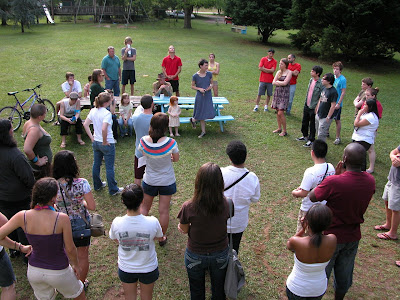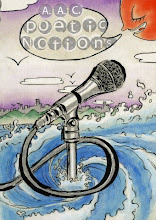by Jamie FlemingBooty, ass, donk, tush-whatever you call it, the butt is here to stay.
And the butt is now so trendy that it has many songs dedicated to it and is one body part that receives the most enhancement. Dr. Anthony Griffin, a prominent plastic surgeon and recurring participant on the popular reality show,
Extreme Makeover, says requests for his original Brazilian Butt Lift Surgery have surpassed all other surgeries, in spite of it’s $15,000+ price tag, according to Bootyful World’s website.
Bootyful World, a 25-minute documentary created by Avital Levy “explores mainstream culture’s growing fixation on the butt.” Although society appears to be moving towards new, more open-minded beauty standards, the film asks if this is actually liberation or solely another mold we are forced into.
Levy created the film in graduate school at the University of Southern California about three years ago. She was in a class focusing on documentaries and had to produce a documentary film.

“I came up with this idea, trying to get a laugh, and then it really came into an idea,” she says. “Then a lot of people ended up talking about it, (they) looked into it, and there was really something there.”
Her film concept was given the go-ahead and that’s where the journey began. And as a woman, the booty was something she always conscious of.
“Men can be very vocal sometimes about what they think about you, and when I moved to LA, it was like more and more (were) people focusing on the butt and just making commen

ts,” Levy says.
The film also looks at Sarah Baartman, a South African woman exploited for her very large rear-end at the start of the nineteenth century.
“It’s a documentary about butts and that intrigues a lot of people,” Levy says. “But it’s really about beauty standards and specifically how hip-hop (seems to) influence mainstream American culture and American beauty standards.”
The film process was pretty demanding, according to Levy. Every week they would shoot or edit something; they would then show it in class and have it critiqued. Levy and her crew were only given 15 hours of film, where as most documentaries have around 80. And in addition to the small amount of film, they had to cut the film down to 26 minutes.
“It was a really rigorous process, and it was a lot fun,” she says.
Besides conducting interviews with Dr. Griffin and people on the street, they also filmed Dr. Griffin doing a Brazilian butt lift, scenes from a dance club and a model photo shoot.
The title,
Bootyful World, just felt right to Levy.
“For me, it seemed like the right fit,” she says. “Booties can be beautiful; you don’t have to feel embarrassed by what you have, that’s sort of what the title meant for me, but I don’t want to say it’s one way or one meaning because people interpret things differently.”
Levy says that the film’s target audience is Black women, but it does appeal to men as well. (And with a title like that, who could resist?)
“I’m glad that a lot of men watch it because for whatever reason, some of them go in and probably watch it to be like, ‘oh, I might see some women and get to see their bodies,’” she says. “But I think that the good thing about that is men…may get something out of it, which is hopefully a vision of how these women feel about their bodies.”
Levy says that anybody should see the film, with or without a butt.
“I think people should be interested in the film just because it’s kind of something that you don’t talk about,” she says. “I think it speaks to a lot of people and a lot of issues.” ‘
Through the documentary, Levy hopes that people learn to feel better in their own skin and to be more sensitive to others.
“What I’m hoping is that people are open a little more in (their) viewpoints,” she says. “I’m also hoping they enjoy the film and take it seriously in the sense (of) people’s feelings and how people feel about their bodies…but not taking it too seriously; you know, it’s about butts, it’s going to be a little light-hearted and little bit playful. Everybody is going to have their own reaction to it.”
Ultimately, the film explores societal beauty standards and ideals, and it examines the way others view us.
“My main purpose was to question the value we place on how other people perceive us and to some extent, to say whether it’s important to (care) about how other people perceive us,” she says. “The broad purpose is to question the value of how people perceive us.”
A.A.C. is showing Bootyful World at GCSU on March 11 starting at 12:30 P.M. The viewing will be held in the University Banquet Room. For more info, email A.A.C. at aacshutdown@gmail.com  Poetry and performance came together once again as Art as An Agent for Change held its second Poetic Notions this April.
Poetry and performance came together once again as Art as An Agent for Change held its second Poetic Notions this April.
 A.A.C. with youth poetry slam winner and runners-up
A.A.C. with youth poetry slam winner and runners-up Paul G. with Poetic Notions winner
Paul G. with Poetic Notions winner





 **Don't forget to check out A.A.C. and the other poets at Poetic Notions, Saturday, April 18 at 7 PM. Tickests are $3 in advance and $5 at the door. It will be held at the MSU Lounge at Georgia College & State University. For more info, contact A.A.C. at
**Don't forget to check out A.A.C. and the other poets at Poetic Notions, Saturday, April 18 at 7 PM. Tickests are $3 in advance and $5 at the door. It will be held at the MSU Lounge at Georgia College & State University. For more info, contact A.A.C. at 






